17+ Sample Employee Review
-
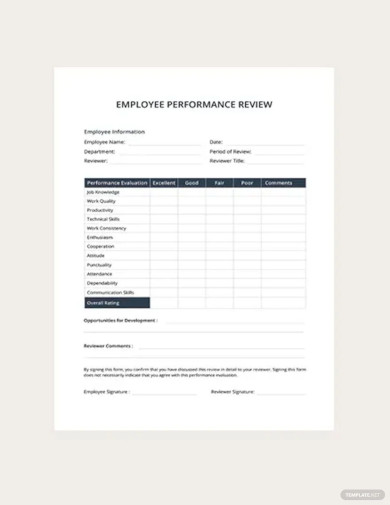
Employee Performance Review
download now -

Restaurant Employee Performance Review Form
download now -
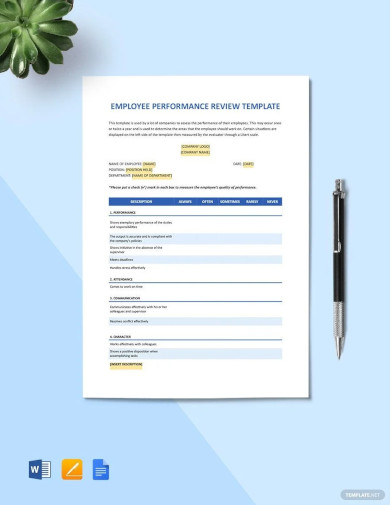
Sample Employee Performance Review
download now -
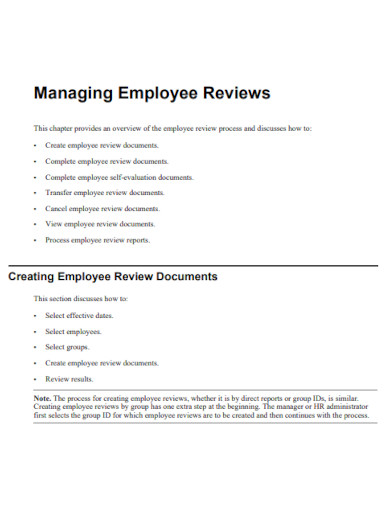
Managing Employee Review
download now -
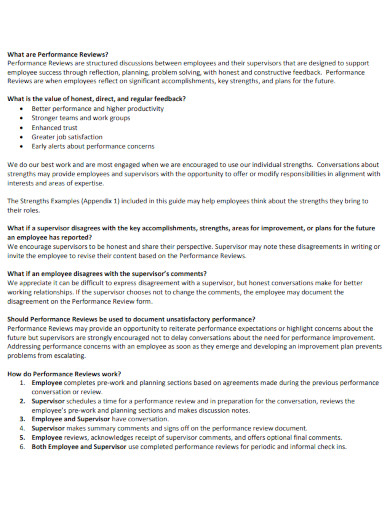
Company Employee Review
download now -
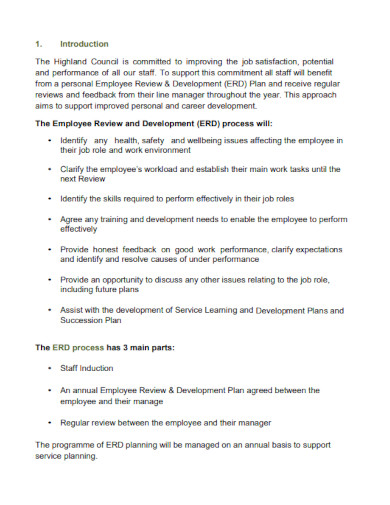
Employee Basic Review
download now -

Employee Development Review
download now -
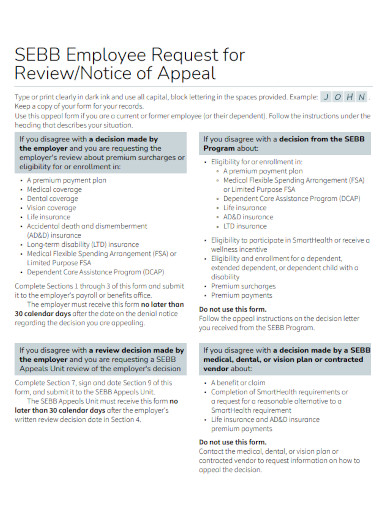
Employee Request for Review
download now -

Employee Behaviour Review
download now -
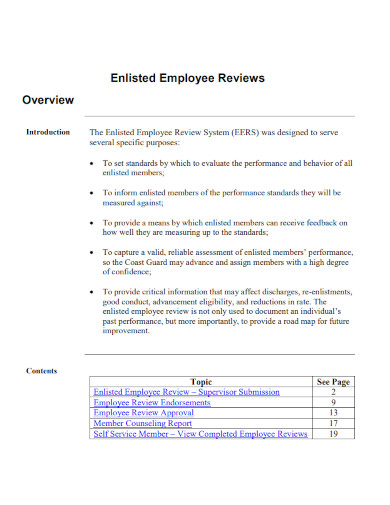
Service Employee Review
download now -
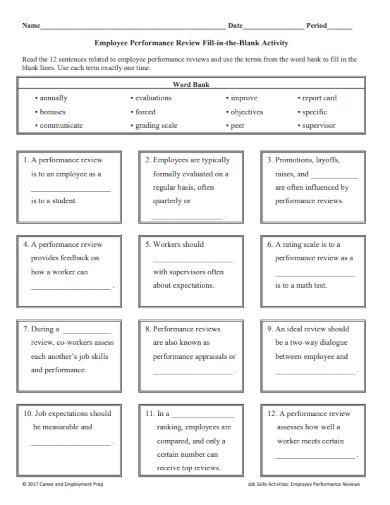
Employee Review Activity
download now -
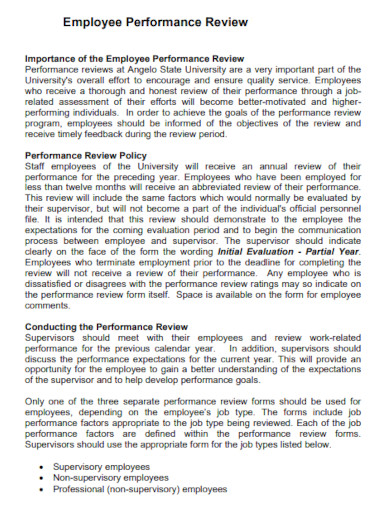
University Employee Performance Review
download now -

Staff Employee Review
download now -
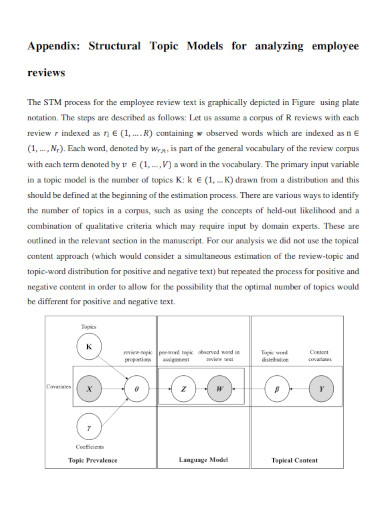
Employee Working Review
download now -
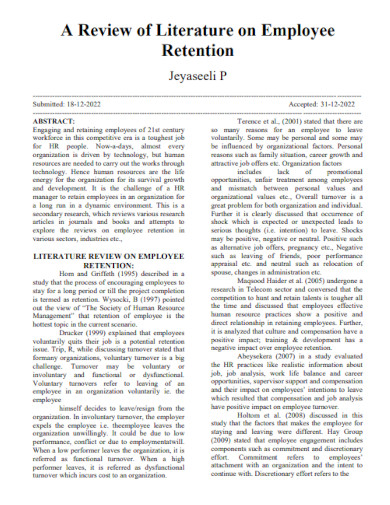
Review of Literature on Employee
download now -
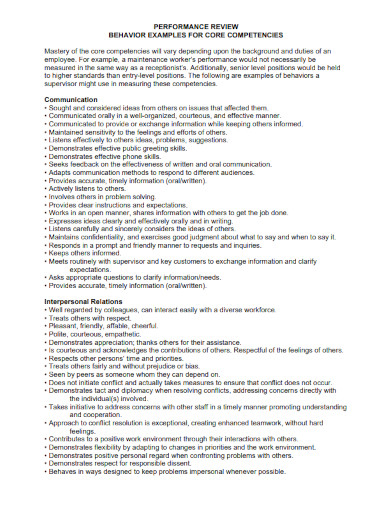
Employee Review Example
download now -
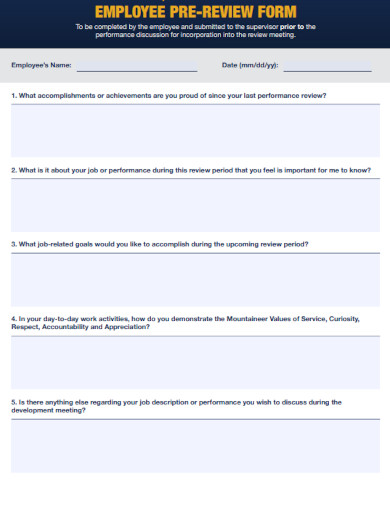
Employee Pre-Review Form
download now -
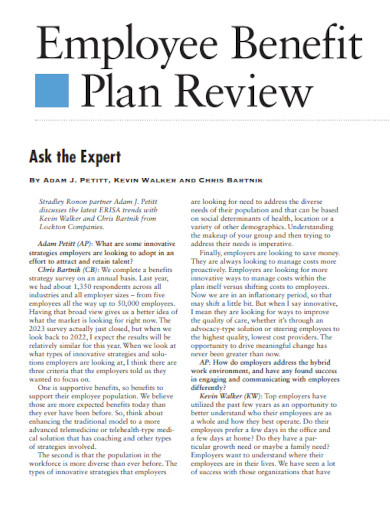
Employee Benefit Plan Review
download now
What Is an Employee Review?
A performance review is a meeting between a manager and an employee to evaluate the employee’s performance over a specified time. Typically, these are held annually but may also occur biannually or quarterly, contingent on performance. Employee evaluations provide the direction and feedback necessary for growth and development. How managers frequently compose and present these evaluations determines how employees receive and process this information.
Benefits of Employee Reviews
Typically, performance reviews are viewed as once-a-year meetings where an employee’s performance, objectives, and career strategy for the previous year are discussed. However, a new direction in employee review techniques, continuous performance checks, is beginning to gain traction. Ongoing performance check-ins are frequently weekly or monthly meetings that allow managers and their employees to discuss any questions, concerns, or ideas. The purpose of these meetings is to keep managers and employees engaged and on the same page. More meetings can often feel like more interruptions during a hectic workweek. However, these regular “one-on-ones” can enhance your and your employee’s overall performance in various ways.
Tips to Give Effective Feedback
The key to providing effective and empathetic feedback is to recognize that the goal is to initiate an open dialogue and assist the recipient in growing. There is no one-size-fits-all solution for providing helpful feedback, but here are four things to remember: Let’s delve deeply into these steps to help you feel more at ease with giving feedback.
1. Ensure the Recipient Is Primed for the Session of Feedback
Ensure the employee’s mental state is conducive to receiving feedback. This is particularly essential if your organization needs a feedback culture. Ask the individual if discussing the situation or behaviour you must address is acceptable. This prevents them from being caught off guard and gives them a sense of autonomy in the exchange. Assist them in understanding why you initiated the conversation and what they stand to gain. The person receiving the feedback must know it is well-intentioned, genuine, and given out of real concern.
2. Describe the Situation in Detail
Ineffective feedback that omits the “when” and “where” may also be perceived as judgmental and make the recipient defensive. Also, imprecise feedback makes it easier for the recipient to incorporate it. Instead, describe what transpired using concrete examples, leaving less room for interpretation.
3. Give Your Opinion on the Circumstance
Avoiding accusatory language, broad generalizations, and “you” statements when describing what went well or did not go well is essential. You may not be aware of everything in your employee’s life, so instead of saying, “You’re never on time to meetings,” begin by saying, “I’ve noticed that you’ve been arriving late to our weekly meetings over the past few weeks. Could you help me comprehend what’s causing you to be late and if there’s anything I can do to assist you (such as rescheduling the meeting)?” In this way, you’ve pointed out that delay isn’t appreciated. Still, you’ve done so in an understanding and empathetic manner that opens the door to a discussion — while proposing solutions to the problem.
4. Provide Actionable Suggestions for Enhancement
There is nothing worse than obtaining feedback that offers no suggestions for improvement. Follow the description of the situation with specific improvement suggestions for the employee. For instance, the phrase “you need to give better presentations” leaves the recipient confused and demoralized. Choose a statement: “To improve your presentation skills, focus on keeping eye contact with the audience and speaking more slowly.”
How to Conduct an Employee Review
Performance evaluations motivate employees to do their best work and contribute to the success of your organization. If managers use the assessments to discuss short- and long-term objectives and plans for reaching them, these meetings can also increase employee retention. Are you prepared to start? Here are the steps to creating an effective employee evaluation program.
1. Start From the Beginning
Establishing a distinct path for the review by beginning with the employee’s date of hire and proceeding through the duration of their employment is facilitated beginning with their date of hire. This process enables you and the employee to reflect on the employee’s performance and provides a valuable framework for discussing expectations and areas for improvement. Discuss the employee’s professional growth and any noteworthy attributes you have observed. Reviewing previous objectives set for employees is valuable for evaluating their performance over a specific time. Using SMART goals can help you both remain on track with your goals. This should remain the primary focus of the performance evaluation. Add as many specifics as necessary to clarify any confusion and restate expectations.
2. Explore the Future
You and your employee benefit from planning ahead to increase and maintain performance. Examine the areas where employees can develop, and set short- and long-term improvement-oriented goals. Focusing on the future for a portion of the evaluation can assist both the manager and employee in understanding how these goals align with the company’s vision statement and determine how to achieve them within the allotted time frame. Together, establish goals that are attainable, reasonable, and equitable.
3. Conclusion With Encouragement
As you encourage your employee to be specific with their objectives, you should also be transparent with your positive feedback. Utilize this opportunity to highlight the employee’s capabilities, positive work practices, and anything else gratifying about their performance, as this will increase the likelihood of a positive response to feedback. Feedback should be integral to one-on-one meetings and periodic check-ins, not merely a checkbox activity. Feedback is essential for learning, growth, and self-assurance, and it will help your employees flourish in their positions.
4. Close With Questions and Comments
Opening the review to inquiries will make employees feel valued, empowered, and certain of their job responsibilities. Inquire if they have questions regarding their function, your role, or anything else that may concern them. Not only do questions and answers provide security for your employee, but also for you. This feedback enables you to identify methods in which you and your department can support your team more effectively. Including a space at the end of your written review for these questions and concerns can be helpful. As your employee responds, acknowledge and reply to each topic raised during the conversation, and record your thoughts in the appropriate section. This demonstrates your commitment to attending to and remembering what your employee says. After the meeting agenda, send the employee an updated evaluation version that includes the meeting notes. Employees appreciate such minor follow-ups and keep both parties informed.
FAQs
What is effective feedback?
Effective feedback can be positive (like a compliment), negative (like a remedial measure), or neutral (like a general observation), but it is always helpful to the recipient. It offers advice or suggestions to recipients that help them achieve their goals.
Why is positive feedback important?
Positive criticism encourages drive, builds self-esteem, and demonstrates your appreciation for others. It aids in understanding and skill development. And the performance of the individual, the team, and the organization is positively impacted by all this. Giving constructive criticism must be a routine part of your manager’s duties.
What is the importance of review in the organization?
Reviews present businesses with an excellent opportunity. The chance to see what their customers see and to work harder to improve overall. Find your company’s evaluations and use the feedback to enhance your services and ensure the future of your business. A successful business is predicated on research. Feedback is essential in the workplace because it provides a means of fostering growth. When you receive feedback at work, you clearly understand what you are doing well and the skills you need to develop. This enables you to identify areas to work on, improving your performance report.
Once developed, the skill of providing effective feedback paves the path for company and individual growth. In addition to enhancing performance, it realigns employee and company objectives and maintains business continuity. Creating a workplace culture in which the exchange of meaningful feedback is valued engages and satisfies employees. Remember that people enablement platforms such as Leapsome can help you provide high-quality, actionable feedback without discomfort if you’re concerned about developing this skill and fostering this culture.
